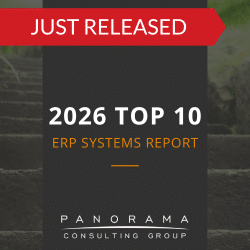Many times, when companies decide to transition from outdated legacy systems to a central ERP platform, the result is sweet success. Unfortunately, that wasn’t the case for Hershey.
Though it’s been more than 25 years since Hershey’s ERP failure, there are still many valuable lessons we can glean from it.
If you’re planning your own implementation, it helps to know where this company went wrong and how you can avoid a similar fate, so let’s look at some of the major issues.
Contemplating litigation?
We have multiple software expert witnesses available for provision of reports, depositions, and testimonies.
Hershey’s ERP Failure: A High-Level Overview
In 1996, Hershey decided it was time to replace its legacy IT systems with an integrated ERP environment. In all, the platform consisted of three main components:
- SAP R/3 ERP software
- Supply chain management (SCM) software
- Customer relationship management (CRM) software
As you might expect, this was a complex implementation from the very beginning. Though the recommended timeline was four years, Hershey decided to expedite the project. They wanted it done in just 30 months, so it could go live before the projected Y2K bug was speculated to take place.
The official cutover was scheduled for July 1999, which wasn’t an ideal time for the company to transition onto a new software platform. Hershey receives the bulk of its holiday orders in late summer, and it’s one of the company’s busiest periods of the year.
Not only did executives vastly underestimate the work required to get all systems live by that time, but they also failed to consider how imperfect deliveries would affect their bottom line.
To juggle the scheduling demands, project leaders took shortcuts and cut corners where possible. This included shortening the testing phase.
4 Lessons Learned From Hershey’s ERP Failure
Where did this project veer off track, and why did those missteps have such dire consequences? Let’s look at a few critical lessons learned from the failed ERP implementation at Hershey.
1. Don’t Rush Systems Testing
If there’s any ERP implementation phase that should be preserved to the greatest extent possible, it’s systems testing. This is an essential part of the journey, and you can’t expedite it simply to meet unrealistic timelines.
Testing is your opportunity to identify any known errors within your data, processes, and system integrations. Rushing it could mean allowing minor problems to slip through the cracks, where they grow into bigger problems.
If you need to move back your cutover date to accommodate thorough testing, then do so. It isn’t worth the risks you incur by pressing forward, even if you save time or money in the short-term.
We recommend simulating realistic operating conditions during your testing phase. Invest in the resources required to help testers feel like they’re using the software in an authentic business environment. This gives them the opportunity to identify as many critical issues as possible.
2. Allow Plenty of Time
With an investment as sizable as an ERP system, it’s imperative that you take your time.
While the Hershey project should have taken 48 months, it wrapped in just 30. Had project executives allowed more time for critical activities, like testing, and had they performed stage gate reviews, there’s a good chance they would have caught some of the issues.
3. Consider a Phased Implementation
In Hershey’s case, the abbreviated timeline was more of an issue than the implementation approach. However, the company’s big bang approach certainly didn’t help matters.
The company attempted to deploy all three technologies at the same time: ERP, CRM, and SCM. While this approach can sometimes result in a lower project cost, it can also be the business equivalent of biting off more than you can chew – especially if the right resources aren’t in place.
4. Keep Internal Scheduling Demands in Mind
Another problem that led to the Hershey SAP ERP implementation failure? Business executives, department managers, and end-users were fully occupied around the time the system was scheduled to go live. It was one of the busiest seasons for the company, and they weren’t adequately prepared to devote enough time and resources to key activities, like ERP training.
If team members are busy, communication and collaboration fall by the wayside. In Hershey’s case, the ERP project moved to the back burner, while other endeavors took center stage.
Avoid ERP Implementation Mistakes
It’s easy to think that since Hershey’s ERP failure happened so long ago, it doesn’t apply to your project today. However, a close look at what went wrong proves that some lessons are timeless.
Looking for expert guidance as you begin your ERP project? Contact our ERP implementation consultants below for a free consultation.















